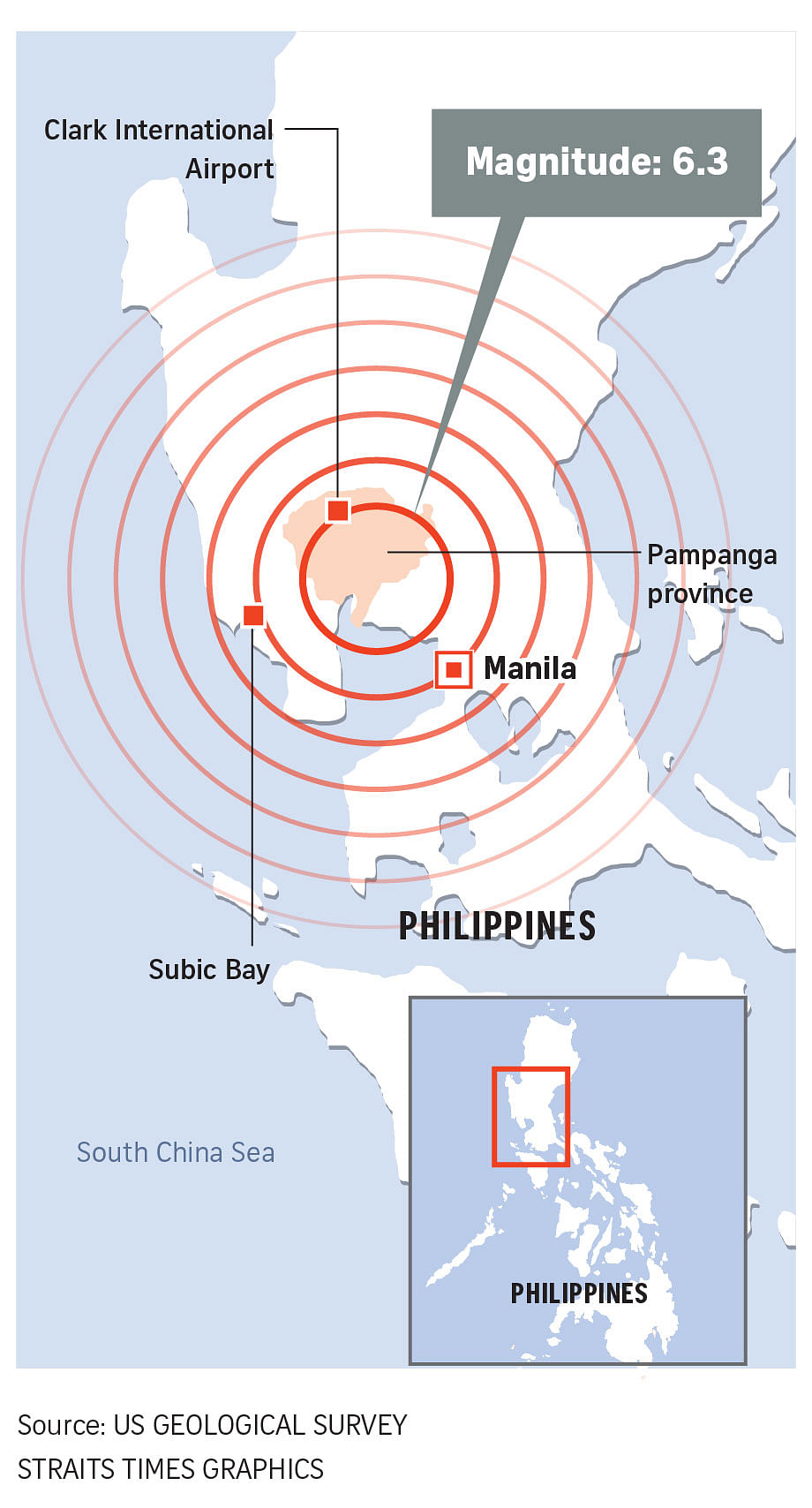8 dead after 6.3-magnitude quake strikes Philippines
Sign up now: Get ST's newsletters delivered to your inbox
Follow topic:
MANILA - A strong earthquake rocked large parts of the Philippine capital and north of it on Monday (April 22), killing at least eight, emptying buildings of tens of thousands who have just returned from the long Holy Week holiday, and shutting down rail lines and a key airport.
The United States Geological Survey said the magnitude 6.3 earthquake struck 60km north-west of Manila at a depth of 40km.
The eight people were killed when two buildings and some houses collapsed in two towns in Pampanga province.
Provincial governor Lilia Pineda told ABS-CBN News three bodies were pulled out of a four-storey building that housed a supermarket in Porac, while an old woman and her grandchild died after they were pinned by a wall in Lubao. Three others whose homes collapsed died in hospitals, she added.
Dozens were rescued from the building in Porac. But at least 30 more were still trapped inside. GMA News reported that two of those who died were children.
"It sounded like a sonic boom," said Mayor Jose Angelo Dominguez, of Castillejos town, in Zambales province, where the quake's epicentre was.
Pampanga, some 90km north of Manila, seems to have borne the brunt of the earthquake.

An airport inside the Clark special economic zone, which straddles parts of Pampanga, was shut down for at least 24 hours.
Photos posted on Twitter showed wall linings and ceilings torn out of at least one building.
Officials at the airport said they would have to inspect the terminal and the runways for damages.
Clark airport handles some 8,000 passengers a day and over 600 flights a week, including those going to Singapore.
Budget carrier Cebu Pacific said it was suspending all flights, two Singapore-bound, from Clark on Tuesday (April 23).
Images and videos posted on social media showed tens of thousands fleeing office and residential buildings, and shopping malls across Metro Manila, a sprawling metropolis of 16 cities and one town and home to over 12 million.
One video showed a skyscraper with mirror claddings swaying, as water cascaded down its sides, at Bonifacio Global City, a financial and commercial hub an hour's drive east of Manila.
Another tall building in Manila that housed a technical school was seen leaning against an adjacent building.
A foreigner was spotted on a sidewalk, carrying an infant, across Avida Towers at the Makati central business district where he lives. "We fled. It was the strongest one I've experienced so far," he said.
Ms Feliza Villanueva, 21, a business process outsourcing employee, told Agence France-Presse she and four colleagues were at work when the quake struck. "This was the second strongest quake I've felt in my entire life. We were worried but we did not panic… People looked in shock, but no one was shouting or anything like that," she said.
Ms Dani Justo, a martial arts instructor, said she was at her Manila home when the quake struck. "The clothes hanging on our line were really swaying. My shih tzu (dog) dropped flat on the ground," she said.
The transportation ministry halted operations at all railway lines in the capital, stranding hundreds of thousands of commuters.
It also ordered an inspection of runways at Manila's main airport, and warned travelers to expect flight delays.
Power interruptions were reported in at least eight provinces.
The Philippines is part of the Pacific "Ring of Fire", an arc of intense seismic activity that stretches from quake-prone Japan through Southeast Asia and across the Pacific basin.

